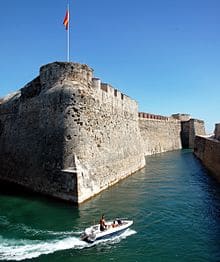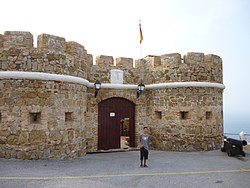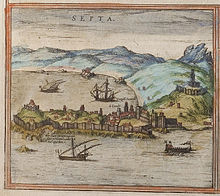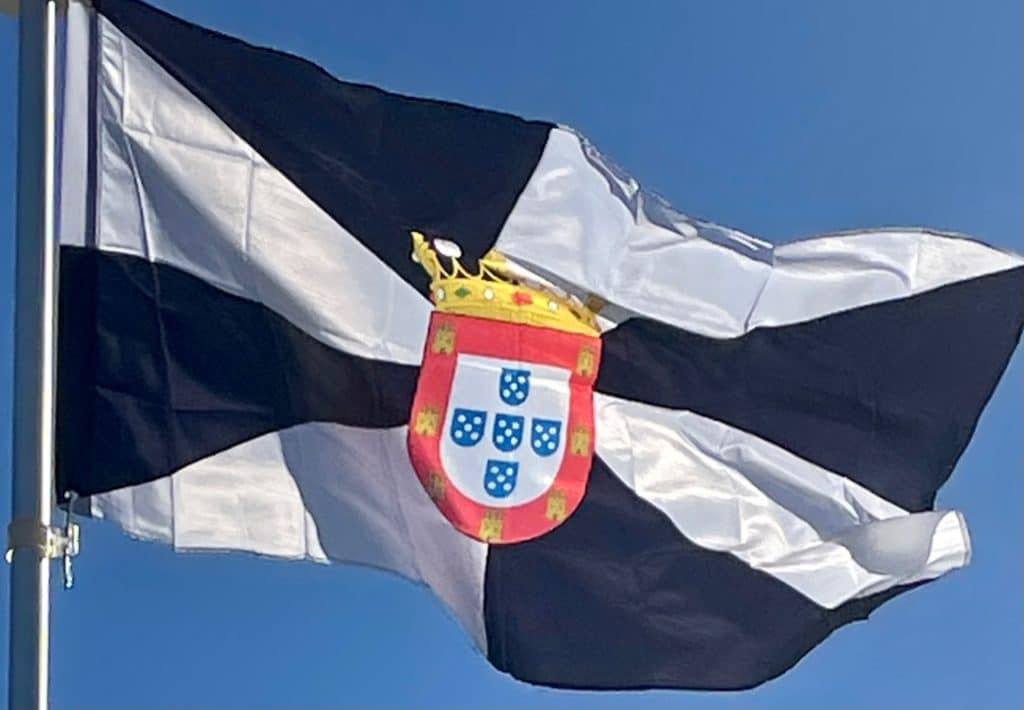
Possession of Ceuta would indirectly lead to further Portuguese expansion. The main area of Portuguese expansion, at this time, was the coast of the Maghreb, where there was grain, cattle, sugar, and textiles, as well as fish, hides, wax, and honey.
Ceuta had to endure alone for 43 years, until the position of the city was consolidated with the taking of Ksar es-Seghir (1458), Arzila and Tangier (1471) by the Portuguese.
The city was recognized as a Portuguese possession by the Treaty of Alcáçovas (1479) and by the Treaty of Tordesillas (1494).
In the 1540s the Portuguese began building the Royal Walls of Ceuta as they are today including bastions, a navigable moat and a drawbridge. Some of these bastions are still standing, like the bastions of Coraza Alta, Bandera and Mallorquines.
Iberian Union:
In 1578 King Sebastian of Portugal died at the Battle of Alcácer Quibir (known as the Battle of Three Kings) in what is today northern Morocco, without descendants, triggering the 1580 Portuguese succession crisis. His granduncle, the elderly Cardinal Henry, succeeded him as King, but Henry also had no descendants, having taken holy orders. When the cardinal-king died two years after Sebastian’s disappearance, three grandchildren of King Manuel I of Portugal claimed the throne: Infanta Catarina, Duchess of Braganza; António, Prior of Crato; and Philip II of Spain (Uncle of former King Sebastian of Portugal), who would go on to be crowned King Philip I of Portugal in 1581, uniting the two crowns and overseas empires known as the Iberian Union, which allowed the two kingdoms to continue without being merged.

During the Iberian Union 1580 to 1640, Ceuta attracted many residents of Spanish origin. Ceuta became the only city of the Portuguese Empire that sided with Spain when Portugal regained its independence in the Portuguese Restoration War of 1640.
Spanish:
The city was attacked by Moroccan forces under Moulay Ismail during the Siege of Ceuta (1694–1727). During the longest siege in history, the city underwent changes leading to the loss of its Portuguese character. While most of the military operations took place around the Royal Walls of Ceuta, there were also small-scale penetrations by Spanish forces at various points on the Moroccan coast, and seizure of shipping in the Strait of Gibraltar.

Disagreements regarding the border of Ceuta resulted in the Hispano-Moroccan War (1859–60), which ended at the Battle of Tetuán.
The Llano Amarillo monument was erected to honor Francisco Franco, it was inaugurated on 13 July 1940. The tall obelisk has since been abandoned, but the shield symbols of the Falange and Imperial Eagle remain visible.
